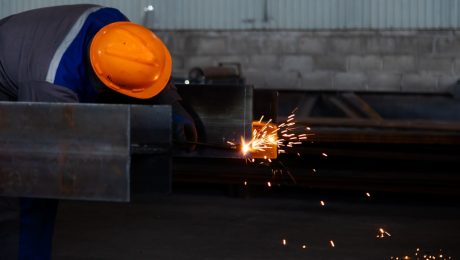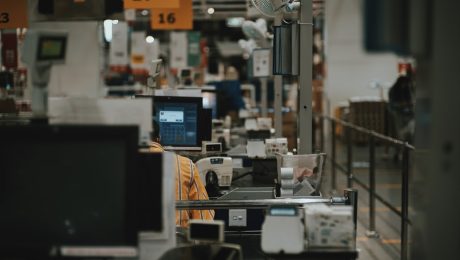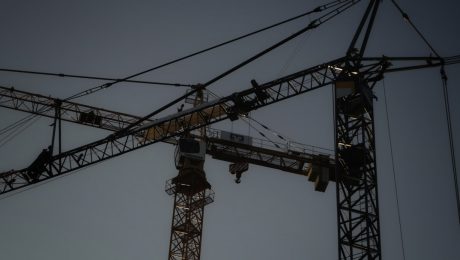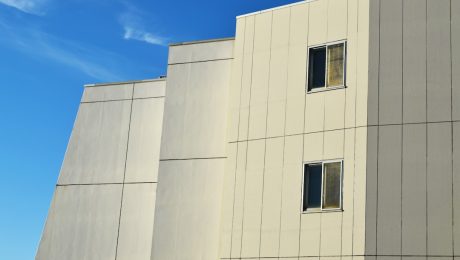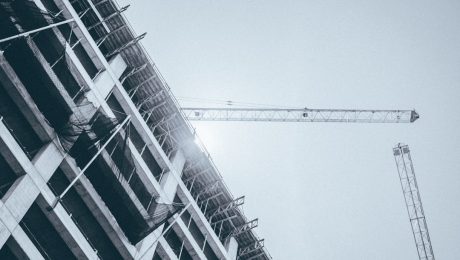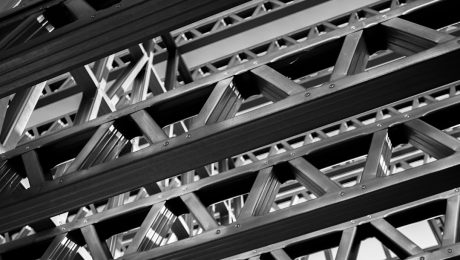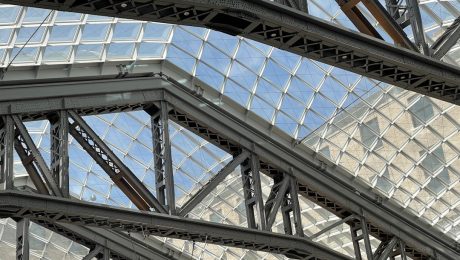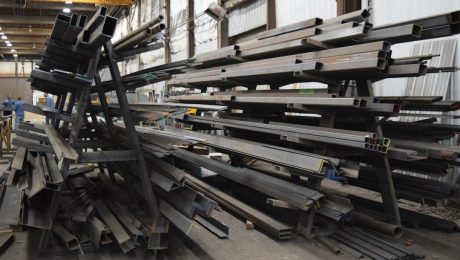Galvanized steel, a ubiquitous material in construction, infrastructure, and manufacturing, owes its widespread use to its exceptional corrosion resistance. This comprehensive guide delves into the science behind this resistance, exploring its mechanisms, applications, limitations, and factors that influence its longevity. Understanding these aspects is crucial for engineers, architects, and anyone working with this versatile material.
The Science Behind Galvanized Steel’s Corrosion Resistance
The remarkable corrosion resistance of galvanized steel stems from the zinc coating applied to its surface. This process, known as galvanization, involves dipping steel into a molten zinc bath, resulting in a metallurgically bonded zinc layer. This layer acts as a sacrificial anode, protecting the underlying steel from corrosion through several mechanisms:
- Barrier Protection: The zinc coating forms a physical barrier, preventing oxygen and moisture from reaching the steel surface. This is particularly effective against atmospheric corrosion.
- Sacrificial Protection: Zinc is more electrochemically active than steel. In the presence of moisture and electrolytes, zinc preferentially corrodes (oxidizes) instead of the steel. This process, known as galvanic corrosion, protects the steel even if the zinc coating is scratched or damaged. The zinc acts as a sacrificial anode, slowly corroding while protecting the steel cathode.
- Self-Healing Properties: Minor scratches or abrasions in the zinc coating can be self-healing. The exposed steel can react with atmospheric moisture to form a thin layer of zinc carbonate, which helps to seal the damage and maintain the protective barrier.
Factors Affecting the Longevity of Galvanized Steel
While galvanized steel offers excellent corrosion resistance, its lifespan can be affected by several factors:
- Thickness of the Zinc Coating: A thicker zinc coating provides longer-lasting protection. The coating thickness is typically specified in grams per square meter (gsm) or in microns (µm).
- Environmental Conditions: Aggressive environments, such as those with high humidity, salinity (coastal areas), or industrial pollutants, can accelerate corrosion. The presence of acidic substances further compromises the zinc coating’s protective ability.
- Surface Preparation: Proper surface preparation of the steel before galvanization is crucial. Any remaining rust, mill scale, or other impurities can hinder the adhesion of the zinc coating and reduce its effectiveness.
- Type of Steel: The type of steel used also plays a role. Higher-strength steels may exhibit different corrosion behavior compared to mild steel.
- Post-Galvanization Handling: Damage to the zinc coating during transportation, handling, or installation can reduce its lifespan. Careful handling is essential to maintain the integrity of the protective layer.
Applications of Galvanized Steel: Where it Shines
The exceptional corrosion resistance of galvanized steel makes it ideal for a wide range of applications, including:
- Construction: Roofing, cladding, structural components, and fencing.
- Automotive Industry: Body panels, bumpers, and other exterior components.
- Infrastructure: Bridges, pipelines, and transmission towers.
- Appliances: Washing machines, refrigerators, and other household appliances.
- Agricultural Equipment: Tractors, harvesters, and other farming machinery.
Limitations of Galvanized Steel: When to Consider Alternatives
Despite its advantages, galvanized steel has certain limitations:
- Hydrogen Embrittlement: In some cases, the galvanization process can introduce hydrogen into the steel, leading to hydrogen embrittlement and reduced ductility. This is more of a concern for high-strength steels.
- Appearance: The galvanized coating has a characteristic silvery-grey appearance, which may not be suitable for all aesthetic applications. Further finishing may be required for specific visual requirements.
- High-Temperature Applications: The zinc coating can oxidize at high temperatures, compromising its protective properties. Alternative coatings are often necessary for high-temperature applications.
- Alkaline Environments: While resistant to many corrosive environments, galvanized steel can exhibit reduced corrosion resistance in strongly alkaline conditions.
Maintaining and Extending the Lifespan of Galvanized Steel
Proper maintenance can significantly extend the lifespan of galvanized steel structures. Regular inspections for damage, prompt repair of any scratches or abrasions, and cleaning to remove corrosive substances can help maintain the integrity of the zinc coating. In harsh environments, protective coatings or paints may be applied to further enhance corrosion resistance.
In conclusion, galvanized steel’s exceptional corrosion resistance makes it a highly valuable material across numerous industries. Understanding the science behind this resistance, the factors that influence its longevity, and its limitations is key to maximizing its performance and lifespan in various applications.
Marine environments present unique challenges to piping systems. The constant exposure to saltwater, extreme temperatures, and the inherent risks associated with maritime operations demand a rigorous approach to safety. This guide delves into the critical aspects of ensuring the integrity and safety of piping systems in marine applications.
1. Material Selection: The Foundation of Marine Pipe Safety
Choosing the right materials is paramount. The selection process must consider the specific application, the fluid being transported (e.g., seawater, fuel oil, chemicals), and the environmental conditions. Common materials include stainless steel (various grades offering varying corrosion resistance), duplex stainless steel (combining strength and corrosion resistance), and high-density polyethylene (HDPE) for certain applications. Each material has its strengths and weaknesses; for instance, stainless steel offers excellent corrosion resistance but can be susceptible to stress corrosion cracking under specific conditions. Careful consideration of the chemical compatibility of the pipe material with the transported fluid is crucial to prevent corrosion and leaks. Proper material selection documentation should be maintained throughout the vessel’s lifespan.
2. Corrosion Prevention: Battling the Marine Environment
Corrosion is the biggest enemy of marine piping systems. The constant exposure to saltwater creates a highly corrosive environment, leading to pipe degradation and potential failures. Effective corrosion prevention strategies are essential. These include the application of protective coatings (e.g., epoxy, zinc-rich primers), cathodic protection (using sacrificial anodes or impressed current systems), and regular inspections to detect and address corrosion at an early stage. Proper design considerations, such as avoiding stagnant areas where corrosion can accumulate, are also critical. Regular monitoring of the effectiveness of corrosion prevention methods is vital to ensure continued protection.
3. Inspection and Maintenance: Proactive Safety Measures
Regular inspection and maintenance are the cornerstones of a safe marine piping system. A comprehensive inspection program should include visual inspections, non-destructive testing (NDT) methods such as ultrasonic testing (UT) and radiographic testing (RT) to detect internal flaws, and pressure testing to verify the integrity of the system. The frequency of inspections should be based on the criticality of the piping system and the level of environmental exposure. A detailed maintenance schedule should be implemented, including cleaning, lubrication, and repair or replacement of damaged components. Proper record-keeping of all inspections and maintenance activities is crucial for compliance and future reference.
4. Emergency Procedures: Responding to Pipe Failures
Despite the best preventative measures, pipe failures can occur. Having well-defined emergency procedures in place is crucial to mitigate the risks associated with such incidents. These procedures should include clear steps for isolating the affected section of the piping system, containing any spills or leaks, and alerting the relevant personnel. Emergency shutdown systems and valves should be regularly tested and maintained to ensure their proper functioning. Training crew members on emergency procedures is paramount to ensure a swift and effective response in the event of a pipe failure. Regular drills and simulations can significantly improve response times and minimize potential damage.
5. Regulatory Compliance: Meeting International Standards
Marine piping systems are subject to stringent international regulations and standards. Compliance with these regulations is not only crucial for safety but also for legal and operational reasons. Major organizations such as the International Maritime Organization (IMO) and classification societies (e.g., DNV, ABS, Lloyd’s Register) set forth detailed requirements for the design, construction, installation, inspection, and maintenance of marine piping systems. Staying updated on the latest regulations and ensuring full compliance is essential for vessel operators. Maintaining comprehensive documentation of compliance is also vital for audits and inspections.
In conclusion, ensuring pipe safety in marine applications requires a multifaceted approach encompassing careful material selection, proactive corrosion prevention, rigorous inspection and maintenance, well-defined emergency procedures, and strict adherence to regulatory standards. By prioritizing safety and implementing these measures, marine operators can significantly reduce the risks associated with piping system failures and ensure the safe and efficient operation of their vessels.
Tags: Marine Piping Safety, Marine Pipe Inspection, Corrosion Prevention Marine, Maritime Safety Regulations, Offshore Piping Systems
body {
font-family: sans-serif;
line-height: 1.6;
}
h1, h2, h3 {
color: #333;
}
h1 {
font-size: 2.5em;
}
h2 {
font-size: 2em;
}
h3 {
font-size: 1.5em;
}
In the competitive world of B2B steel sales, a one-size-fits-all approach is a recipe for disaster. To truly thrive, you need a laser-focused strategy that targets specific customer segments. This guide will equip you with the knowledge and tools to effectively segment your B2B steel customers, leading to increased sales, improved marketing ROI, and a more robust business strategy.
1. Understanding the Importance of B2B Steel Customer Segmentation
Segmenting your customer base isn’t just a good idea; it’s essential for long-term success in the steel industry. By grouping similar customers together based on shared characteristics, you can tailor your marketing messages, pricing strategies, and product offerings to resonate more effectively. This leads to higher conversion rates, increased customer lifetime value, and a more efficient use of your resources. Ignoring segmentation means wasting valuable time and money on marketing efforts that fail to connect with your target audience. For example, a small construction company will have vastly different needs and purchasing patterns compared to a large automotive manufacturer. Segmentation allows you to address these unique needs individually.
2. Key Variables for Segmenting Your B2B Steel Customers
Effective segmentation requires identifying the right variables. Several factors can be used to segment your B2B steel customers, and often, a multi-variable approach is most effective. Consider these key variables:
2.1. Industry and Application:
Different industries use steel in vastly different ways. Automotive manufacturers require high-strength, lightweight steels, while construction companies might prioritize durability and cost-effectiveness. Understanding the specific application of the steel is crucial for tailoring your offerings and messaging.
2.2. Company Size and Revenue:
A small fabrication shop will have vastly different purchasing power and needs compared to a large multinational corporation. Segmenting by company size allows you to tailor your sales approach, pricing, and payment terms accordingly. Larger companies may require more complex contracts and longer lead times.
2.3. Geographic Location:
Location plays a significant role in logistics and transportation costs. Segmenting by geographic region allows you to optimize your delivery networks and adjust pricing to reflect regional variations in demand and transportation expenses. Proximity to your facilities can also influence pricing and delivery times.
2.4. Purchasing Behavior:
Analyzing past purchasing patterns, order frequency, and order size can reveal valuable insights into customer behavior. Identifying high-value customers and understanding their purchasing habits allows for proactive relationship management and targeted marketing campaigns.
2.5. Customer Relationship Level:
Differentiating between new, existing, and high-value customers is crucial. New customers might require more detailed product information and onboarding, while existing customers might benefit from loyalty programs or personalized offers. High-value customers deserve dedicated account management and tailored solutions.
3. Implementing Effective Segmentation Strategies
Once you’ve identified the key variables, implementing your segmentation strategy requires careful planning and execution. Consider using CRM software to manage customer data and automate segmentation processes. This allows for efficient tracking of customer interactions and personalized communication. Regularly review and refine your segmentation strategy to ensure it remains relevant and effective. Market trends and customer needs are constantly evolving, so adaptation is key.
4. Tailoring Your Marketing and Sales Efforts
Effective segmentation is only worthwhile if you tailor your marketing and sales efforts accordingly. Once you’ve segmented your customers, create targeted marketing campaigns and sales pitches that resonate with each segment’s specific needs and preferences. This might involve using different marketing channels, messaging, and pricing strategies for each segment. For instance, you might use digital marketing for reaching smaller companies while focusing on personal relationships for large corporations.
5. Measuring the Success of Your Segmentation Strategy
Regularly evaluate the effectiveness of your segmentation strategy by tracking key performance indicators (KPIs). Monitor metrics such as conversion rates, customer lifetime value, and sales revenue for each segment. This data will help you identify areas for improvement and refine your approach. A/B testing different marketing materials and sales approaches within each segment can provide valuable insights into what resonates most effectively.
By effectively segmenting your B2B steel customers, you can unlock significant opportunities for growth and profitability. Remember that this is an ongoing process that requires continuous monitoring, adaptation, and refinement.
SEO-Friendly Tags:
B2B Steel Sales, Customer Segmentation, Steel Industry Marketing, B2B Marketing Strategy, Targeted Marketing
In the fast-paced world of media production, post-production is where the magic truly happens. It’s the final stage where raw footage transforms into a polished, compelling product. However, even the most talented editors can overlook subtle errors. This is where robust post-production quality monitoring (PQM) becomes crucial. PQM isn’t just about catching mistakes; it’s about ensuring your final product meets – and exceeds – expectations, delivering a seamless and professional experience to your audience. This comprehensive guide will explore the key aspects of effective PQM.
Establishing Clear Quality Standards and Checklists
Before diving into the actual monitoring process, it’s paramount to define clear quality standards. What constitutes “acceptable” for your project? This involves specifying technical requirements (resolution, frame rate, audio levels) and aesthetic standards (color grading consistency, visual style). Creating detailed checklists tailored to each project type (film, video, animation, audio) is invaluable. These checklists should outline specific points to be checked at each stage of post-production, ensuring nothing is missed. For example, a video editing checklist might include: verifying scene transitions, checking for audio sync issues, inspecting for color banding, and reviewing for continuity errors. The more detailed and specific your checklists, the more effective your PQM will be.
Implementing Automated Quality Control Tools
Manual checks are essential, but relying solely on human eyes can be inefficient and prone to errors. Fortunately, numerous automated quality control (QC) tools are available to streamline the process. These tools can automatically detect technical issues such as dropped frames, audio glitches, incorrect color spaces, and aspect ratio problems. Software like Adobe Premiere Pro, DaVinci Resolve, and Final Cut Pro X offer built-in QC features, while dedicated QC applications provide more comprehensive analysis. Integrating these tools into your workflow significantly reduces the time spent on manual checks, allowing your team to focus on more nuanced aspects of quality.
The Role of Human Reviewers in Post-Production Quality Monitoring
While automation is crucial, human review remains an indispensable part of PQM. Automated tools can identify technical glitches, but they can’t always catch subtle aesthetic flaws or contextual errors. Human reviewers bring a critical eye, artistic sensibility, and contextual understanding to the process. They can assess the overall pacing, emotional impact, and narrative coherence of the final product. Employing a dedicated QC team or assigning specific reviewers to different aspects of the project can ensure a comprehensive and thorough review process. This also allows for a system of checks and balances, preventing individual biases from affecting the final product.
Streamlining the Feedback and Revision Process
Efficient communication and collaboration are vital for effective PQM. A well-defined feedback process ensures that issues identified during monitoring are addressed promptly and accurately. This often involves using annotation tools within editing software or collaborative platforms to mark specific areas needing attention. Clear communication between the QC team, editors, and other stakeholders is essential to avoid misunderstandings and delays. Implementing a version control system allows for easy tracking of revisions and ensures everyone is working on the latest version of the project. This streamlined approach minimizes confusion and speeds up the overall post-production process.
Continuous Improvement and Adaptation of Quality Control Strategies
PQM is not a one-time activity; it’s an ongoing process of refinement. Regularly reviewing your QC procedures and adapting them based on feedback and identified weaknesses is critical. Analyze the types of errors that consistently occur and identify areas where your processes can be improved. This might involve investing in new tools, refining your checklists, or providing additional training to your team. By continuously evaluating and refining your PQM strategy, you can ensure that your post-production workflow remains efficient, effective, and consistently delivers high-quality results. Tracking metrics like the number of errors detected, the time taken for revisions, and client feedback can provide valuable insights into the effectiveness of your PQM process.
By implementing these strategies and embracing a culture of quality, you can elevate your post-production workflow to new heights. Remember, post-production quality monitoring isn’t just about catching mistakes; it’s about crafting a polished, professional product that leaves a lasting impression on your audience.
SEO-Friendly Tags:
- Post-Production Quality Control
- Video QC
- Audio QC
- Post-Production Workflow
- Media Quality Assurance
body {
font-family: sans-serif;
line-height: 1.6;
margin: 20px;
}
h1, h2 {
color: #333;
}
img {
max-width: 100%;
height: auto;
display: block;
margin: 20px auto;
}
The construction industry is undergoing a significant transformation, driven by the need for sustainable practices, faster construction times, and improved building performance. Hybrid construction, a revolutionary approach that blends traditional methods with modern techniques and materials, is leading this charge. This comprehensive guide explores the multifaceted world of hybrid construction, delving into its various aspects and showcasing its potential to reshape the future of building.
Understanding the Core Principles of Hybrid Construction
Hybrid construction isn’t simply about combining two different materials; it’s a strategic approach that leverages the strengths of various methods and materials to optimize the overall building process and performance. For instance, a project might utilize steel framing for its structural integrity, coupled with prefabricated modular components for faster assembly and reduced on-site labor. This synergy allows builders to overcome the limitations of traditional methods, leading to projects that are stronger, more efficient, and more sustainable. The key is careful planning and selection of materials to ensure compatibility and optimal performance.
Common Hybrid Construction Methods: A Detailed Look
Several hybrid construction methods are gaining popularity. One prominent example is the combination of steel and concrete. Steel’s strength and flexibility are utilized for the frame, while concrete provides fire resistance and stability. Another popular method involves integrating timber framing with modern engineered wood products like cross-laminated timber (CLT). CLT offers superior strength and dimensional stability compared to traditional timber, making it an ideal choice for multi-story buildings. Furthermore, the use of prefabricated components, such as modular units, in conjunction with traditional in-situ construction is becoming increasingly common. This allows for a faster construction process and better quality control.
Exploring the Diverse Materials Used in Hybrid Construction
The beauty of hybrid construction lies in its versatility. It can accommodate a wide range of materials, including steel, concrete, timber, masonry, and various composite materials. The choice of materials depends on factors such as project requirements, budget, environmental considerations, and local regulations. For example, sustainable materials like bamboo or recycled steel can be integrated into the design to minimize the environmental impact. The use of high-performance concrete, with its enhanced strength and durability, is also becoming more prevalent. This flexibility in material selection allows for tailored solutions to meet specific project needs.
The Environmental Impact and Sustainability Advantages
Hybrid construction offers significant environmental advantages. The strategic use of materials can reduce waste, minimize energy consumption during construction, and create more sustainable buildings. For instance, incorporating prefabricated components reduces on-site waste and construction time, thereby lowering carbon emissions. The use of sustainably sourced timber or recycled materials further enhances the environmental profile of the project. Moreover, hybrid structures can be designed to be more energy-efficient, reducing operational costs and minimizing their long-term environmental footprint. This commitment to sustainability is increasingly crucial in the face of growing environmental concerns.
Future Trends and Innovations in Hybrid Construction
The future of hybrid construction looks bright, with ongoing innovations and technological advancements constantly pushing the boundaries of what’s possible. The integration of Building Information Modeling (BIM) and advanced digital fabrication techniques is streamlining the design and construction process. The development of new composite materials with enhanced properties is also paving the way for more innovative and sustainable structures. Furthermore, the increasing adoption of automation and robotics in construction is expected to improve efficiency and reduce construction times. These advancements promise to make hybrid construction even more efficient, sustainable, and cost-effective in the years to come.
Hybrid construction represents a significant leap forward in building technology, offering a pathway to more sustainable, efficient, and resilient structures. By combining the best aspects of different methods and materials, this approach is transforming the construction industry and shaping the future of our built environment.
Tags: Hybrid Construction, Sustainable Construction, Prefabricated Construction, Modular Construction, Green Building
Multi-story steel buildings are increasingly popular for their versatility, strength, and sustainability. This comprehensive guide delves into the key aspects of designing, constructing, and maintaining these impressive structures.
1. The Unmatched Strength and Stability of Steel
Steel’s inherent strength-to-weight ratio is a primary reason for its dominance in multi-story construction. Unlike concrete, steel can span greater distances with lighter members, leading to cost savings and faster construction times. This high tensile strength allows for the creation of taller, more slender structures with improved resistance to seismic activity and wind loads. Advanced steel alloys and fabrication techniques further enhance these properties, enabling architects and engineers to push the boundaries of design and create visually stunning and structurally sound buildings. Furthermore, steel’s resilience makes it an ideal choice for areas prone to natural disasters, ensuring the safety and longevity of the building.
2. Design Considerations for Multi-Story Steel Structures
Designing a multi-story steel building requires meticulous planning and detailed engineering. Factors such as building codes, site conditions, and intended use significantly influence the design process. Structural engineers must carefully consider the load-bearing capacity of the steel frame, factoring in live loads (occupancy, furniture), dead loads (weight of the structure itself), and environmental loads (wind, snow, seismic activity). The choice of steel sections, connection types, and bracing systems is crucial for ensuring structural integrity and stability. Advanced computer modeling and finite element analysis are commonly employed to optimize the design and predict the building’s behavior under various loading conditions. Furthermore, fire protection and accessibility considerations are paramount in the design stage, ensuring compliance with building codes and safety regulations.
3. Construction Techniques and Time Efficiency
Steel construction offers significant advantages in terms of speed and efficiency. Pre-fabricated steel components can be manufactured off-site, reducing on-site construction time and minimizing disruptions. This modular approach streamlines the construction process, allowing for faster project completion and reduced labor costs. The precision of pre-fabrication ensures accurate assembly on-site, minimizing errors and rework. Furthermore, the lighter weight of steel components simplifies transportation and handling, making it suitable for challenging site conditions. The use of advanced welding and bolting techniques ensures strong and reliable connections, contributing to the overall speed and efficiency of the construction process. This accelerated timeline leads to significant cost savings and faster occupancy of the building.
4. Sustainability and Environmental Impact of Steel Buildings
Steel is a highly recyclable material, making it a sustainable choice for construction. The majority of steel used in buildings is derived from recycled scrap metal, reducing the demand for virgin materials and minimizing environmental impact. Furthermore, steel’s durability and longevity contribute to the building’s overall sustainability. Steel buildings can withstand harsh weather conditions and require less maintenance compared to other materials, reducing their long-term environmental footprint. The use of sustainable construction practices, such as minimizing waste and employing energy-efficient design strategies, further enhances the environmental performance of steel buildings. Incorporating green building certifications, like LEED, allows for a more sustainable approach throughout the entire lifecycle of the building.
5. Cost-Effectiveness and Long-Term Value of Steel Construction
While the initial cost of steel construction might seem higher than some other materials, the long-term benefits often outweigh the initial investment. The speed and efficiency of steel construction translate into significant cost savings in terms of labor and project timelines. The durability and resilience of steel structures minimize maintenance costs and extend the building’s lifespan, resulting in lower long-term expenses. Furthermore, the flexibility of steel allows for easier modifications and expansions in the future, adapting the building to changing needs and maximizing its long-term value. The versatility of steel also allows for creative architectural designs, potentially increasing the building’s market value and attracting tenants.
In conclusion, multi-story steel building solutions offer a compelling combination of strength, sustainability, and cost-effectiveness. By carefully considering the design considerations, construction techniques, and long-term value, developers and architects can harness the full potential of steel to create innovative and enduring structures that meet the demands of modern construction.
SEO Tags:
- Multi-story steel buildings
- Steel construction
- High-rise steel structures
- Steel building design
- Sustainable steel buildings
The construction industry is undergoing a significant transformation, driven by the need for sustainable, efficient, and cost-effective building solutions. Hybrid construction, a revolutionary approach combining different materials and construction methods, is at the forefront of this change. This innovative technique offers a compelling blend of strengths, mitigating the weaknesses of individual materials and construction processes. Let’s explore the fascinating world of hybrid construction in detail.
1. Understanding the Core Principles of Hybrid Construction
Hybrid construction isn’t simply about mixing materials; it’s a strategic approach that leverages the unique advantages of various building components to achieve optimal performance. For example, the strength and durability of concrete might be combined with the lightweight and sustainable properties of timber, or the speed of prefabrication with the resilience of steel. The key is to carefully select materials and methods that complement each other, creating a synergistic effect that exceeds the capabilities of any single system. This approach often leads to optimized designs, reduced construction time, and enhanced building performance.
2. Popular Material Combinations in Hybrid Construction
The possibilities in hybrid construction are virtually limitless. Some of the most common and successful combinations include:
- Timber and Concrete: This pairing unites the sustainability and speed of timber framing with the strength and fire resistance of concrete. Timber frames can form the main structure, with concrete used for key load-bearing elements or infill walls.
- Steel and Concrete: A classic combination, this approach uses steel for its high tensile strength and ability to span large distances, while concrete provides compressive strength and fire protection. This is frequently seen in high-rise buildings and complex structures.
- Timber and Steel: This increasingly popular combination leverages the sustainability of timber with the strength and precision of steel. Steel can be used for connections, bracing, or load-bearing elements within a timber frame structure.
- Concrete and Masonry: This approach often involves using concrete for the structural frame and masonry (brick or block) for cladding or infill walls. This provides a robust and aesthetically pleasing building envelope.
- Mass Timber and Steel: Utilizing large engineered wood products like cross-laminated timber (CLT) and glulam beams with steel for critical connections and bracing allows for the creation of tall, sustainable buildings. This combination balances the advantages of both materials effectively.
3. Advantages of Employing Hybrid Construction Methods
The benefits of hybrid construction are substantial and extend across various aspects of the building process:
- Enhanced Structural Performance: Combining materials optimizes structural integrity, leading to stronger, more resilient buildings capable of withstanding various environmental loads.
- Improved Sustainability: Utilizing sustainable materials like timber reduces the carbon footprint of the building, contributing to greener construction practices.
- Cost-Effectiveness: Strategic material selection can optimize costs by using less expensive materials where appropriate without compromising structural integrity.
- Faster Construction Times: The use of prefabricated components and efficient construction methods often leads to significantly reduced construction time.
- Increased Design Flexibility: Hybrid construction allows for greater architectural freedom and creative design solutions, pushing the boundaries of traditional building designs.
- Reduced Waste: Precise material selection and efficient construction methods minimize material waste, contributing to a more sustainable building process.
4. Addressing Potential Challenges in Hybrid Construction
While hybrid construction offers numerous advantages, it also presents some challenges that need careful consideration:
- Material Compatibility: Ensuring proper compatibility between different materials is crucial to avoid potential issues like expansion and contraction mismatch or corrosion.
- Design Complexity: Designing hybrid structures requires specialized expertise and sophisticated software to ensure optimal performance and structural integrity.
- Construction Expertise: Skilled labor proficient in handling various materials and construction techniques is essential for successful project execution.
- Cost of Specialized Components: Some hybrid construction components might be more expensive than traditional alternatives, requiring careful budget planning.
- Regulatory Compliance: Meeting building codes and regulations for hybrid structures might require additional approvals and certifications.
5. The Future of Hybrid Construction: Emerging Trends and Innovations
The future of hybrid construction is bright, with ongoing innovations and emerging trends shaping its evolution:
- Increased Use of Mass Timber: The growing popularity of mass timber products like CLT is driving the development of taller and more complex hybrid timber structures.
- Integration of Smart Technologies: The incorporation of smart sensors and building management systems is enhancing the efficiency and sustainability of hybrid buildings.
- Advanced Material Science: Research into new materials and composite materials is paving the way for even more innovative and sustainable hybrid construction solutions.
- 3D Printing in Construction: 3D printing technology is being explored for creating customized components and structures, potentially revolutionizing the hybrid construction process.
- Focus on Circular Economy Principles: The industry is increasingly focusing on using recycled and recyclable materials in hybrid construction, promoting a circular economy approach.
Hybrid construction represents a significant leap forward in the building industry, offering a sustainable and efficient path towards creating innovative and resilient structures. By understanding its principles, advantages, and challenges, we can harness its potential to build a more sustainable and prosperous future.
Tags: hybrid construction, sustainable building, timber frame construction, steel construction, concrete construction
High-Performance Engineering Analysis (HEA) profiles are crucial for designing and analyzing heavy load structures that must withstand extreme forces and environmental conditions. This comprehensive guide delves into the intricacies of HEA profiles, exploring key aspects to ensure structural integrity and longevity. Understanding these principles is vital for engineers tasked with creating robust and reliable structures in diverse applications, from bridges and skyscrapers to offshore platforms and heavy machinery.
1. Understanding the Fundamentals of HEA in Heavy Load Structures
HEA profiles, often implemented through Finite Element Analysis (FEA), involve a sophisticated approach to structural analysis. Unlike simpler methods, HEA considers a multitude of factors, including complex geometries, material nonlinearities (e.g., plasticity, creep), and various loading conditions. For heavy load structures, this comprehensive approach is essential because neglecting these complexities can lead to inaccurate predictions and potential catastrophic failures. The analysis typically involves creating a detailed digital model of the structure, applying realistic loads and boundary conditions, and then solving the resulting equations to determine stresses, strains, displacements, and other critical parameters. Different software packages, such as ANSYS, Abaqus, and Nastran, are commonly employed for this purpose. The accuracy of the HEA profile depends heavily on the quality of the input data, including material properties, geometry definition, and load representation.
2. Material Selection: A Cornerstone of Robust HEA Profiles
The choice of material significantly impacts the performance and longevity of heavy load structures. HEA profiles allow for detailed investigation of material behavior under extreme stress. For instance, high-strength steels, advanced composites, and specialized alloys might be considered, each with its own unique properties and limitations. The HEA process allows engineers to evaluate the stress-strain relationship of different materials under various loading scenarios, predicting failure points and optimizing material usage for maximum efficiency. Factors like yield strength, ultimate tensile strength, fatigue resistance, and fracture toughness are crucial parameters considered during material selection. Furthermore, the HEA profile can account for material degradation over time due to factors like corrosion or fatigue, providing a more realistic assessment of the structure’s long-term performance.
3. Identifying and Mitigating Critical Failure Modes
Heavy load structures are susceptible to various failure modes, including yielding, fracture, buckling, and fatigue. HEA profiles are instrumental in identifying these potential failure points. By simulating different loading scenarios and analyzing stress distributions, engineers can pinpoint areas of high stress concentration and potential weaknesses. This allows for proactive design modifications, such as adding reinforcement, changing geometry, or employing different materials to mitigate the risk of failure. For instance, FEA can reveal stress hotspots that might lead to fatigue cracks, prompting the use of fatigue-resistant materials or design modifications to reduce cyclic stresses. Understanding the specific failure modes relevant to the application is critical for creating effective HEA profiles that ensure structural integrity.
4. Design Optimization Techniques within the HEA Framework
HEA profiles are not simply about analysis; they also facilitate design optimization. By iteratively modifying the design and re-running the analysis, engineers can refine the structure to achieve optimal performance while minimizing material usage and cost. Topology optimization, a powerful technique within the HEA framework, allows for the automated generation of designs that are optimally suited for a given set of loading conditions and constraints. Shape optimization refines existing designs by adjusting their geometry to reduce stress concentrations and improve overall performance. Size optimization focuses on adjusting the dimensions of structural elements to meet performance requirements efficiently. These optimization techniques, integrated within the HEA process, lead to lighter, stronger, and more cost-effective structures.
5. Advanced Considerations: Nonlinearity, Dynamics, and Environmental Effects
While basic HEA profiles may consider linear elastic material behavior, many real-world scenarios demand a more sophisticated approach. Nonlinear material behavior, such as plasticity and creep, significantly affects the response of heavy load structures. HEA profiles can incorporate these nonlinearities to provide more accurate predictions, especially under extreme loading conditions. Dynamic loading, such as seismic activity or impact forces, requires specialized HEA techniques to capture the transient response of the structure. Furthermore, environmental factors like temperature variations, corrosion, and wind loading must be incorporated into the analysis to ensure the long-term reliability of the structure. Advanced HEA profiles integrate these complex factors for a holistic assessment of structural performance.
In conclusion, High-Performance Engineering Analysis profiles are indispensable tools for designing and analyzing heavy load structures. By incorporating advanced modeling techniques, material considerations, failure mode assessments, and design optimization, engineers can create robust, reliable, and efficient structures capable of withstanding extreme conditions. The continuous evolution of HEA methodologies ensures that these structures meet the ever-increasing demands of modern engineering challenges.
SEO-Friendly Tags:
- HEA Profiles
- Heavy Load Structures
- Structural Analysis
- Finite Element Analysis (FEA)
- Design Optimization
Industrial steel frame projects are the backbone of modern manufacturing, warehousing, and logistics. Their strength, versatility, and cost-effectiveness make them the preferred choice for a wide range of large-scale constructions. This comprehensive guide delves into the intricacies of these projects, exploring everything from initial design considerations to the final stages of construction and beyond.
1. The Design and Engineering of Robust Steel Frames
The design phase is critical for the success of any industrial steel frame project. Detailed engineering calculations are essential to ensure the structure can withstand anticipated loads, including wind, snow, seismic activity, and the weight of equipment and materials. This involves sophisticated software simulations and rigorous analysis to optimize the design for strength, stability, and cost-effectiveness. Factors like the intended use of the building, local building codes, and environmental considerations all play a significant role in the design process. Experienced structural engineers are crucial in this phase, ensuring compliance with regulations and optimal structural performance. They will determine the size, shape, and grade of steel required for each component, minimizing material waste while maximizing structural integrity.
2. Fabrication: Precision Cutting and Assembly of Steel Components
Once the design is finalized, the fabrication process begins. This involves precise cutting, shaping, and welding of steel components in a controlled factory environment. Modern fabrication techniques utilize advanced technologies like CNC cutting and robotic welding, ensuring high accuracy and consistency. This controlled environment minimizes errors and ensures the components are manufactured to exact specifications, leading to faster and more efficient on-site construction. Quality control is paramount during fabrication, with rigorous inspections at each stage to guarantee the structural integrity of the finished components. Pre-fabrication also allows for better project management, as many components can be prepared in advance, reducing on-site construction time.
3. Erection: Lifting and Assembling the Steel Frame on Site
The erection phase involves the transportation and assembly of the pre-fabricated steel components on the construction site. This requires specialized heavy lifting equipment, such as cranes and forklifts, operated by skilled professionals. Safety is paramount during erection, with strict adherence to safety protocols and regulations. The process typically involves careful sequencing of component placement, ensuring accurate alignment and secure connections. Experienced crews are crucial for efficient and safe erection, minimizing downtime and potential risks. The use of advanced technologies, such as laser surveying and GPS-guided equipment, enhances accuracy and speeds up the process. Proper planning and coordination between different teams on-site are essential to ensure a smooth and efficient erection process.
4. Advantages of Industrial Steel Frame Construction
Industrial steel frame construction offers numerous advantages over traditional construction methods. Firstly, steel is incredibly strong and durable, allowing for the construction of large, open spaces with minimal internal supports. This maximizes usable floor space and flexibility for layout changes. Secondly, steel frames are relatively lightweight compared to concrete or masonry structures, reducing foundation costs and construction time. Thirdly, steel is highly recyclable, making it an environmentally friendly option. Fourthly, the pre-fabrication aspect significantly reduces construction time on-site, leading to faster project completion and reduced labor costs. Finally, steel frames are highly resistant to fire and pests, providing long-term durability and reduced maintenance costs.
5. Applications and Future Trends in Industrial Steel Frame Projects
Industrial steel frames are used in a vast array of applications, including warehouses, factories, distribution centers, shopping malls, and even large-scale agricultural structures. The versatility of steel allows for adaptation to specific project needs and requirements. Future trends in industrial steel frame projects include the increasing use of sustainable and high-performance steel, incorporating smart technologies for monitoring and management, and exploring innovative design solutions for increased efficiency and sustainability. The integration of Building Information Modeling (BIM) is becoming increasingly prevalent, allowing for better collaboration and optimized design. The adoption of modular construction techniques, where pre-fabricated sections are assembled on-site, is another emerging trend, further accelerating the construction process and enhancing efficiency.
In conclusion, industrial steel frame projects represent a robust and efficient approach to large-scale construction. Understanding the intricacies of design, fabrication, and erection is crucial for successful project delivery. The advantages of strength, durability, cost-effectiveness, and speed make them a preferred choice for a wide range of industrial applications, and ongoing innovations promise even greater efficiency and sustainability in the future.
SEO Tags:
industrial steel frame, steel structure construction, warehouse steel frame, industrial building design, steel fabrication
The steel industry, a cornerstone of global manufacturing, is undergoing a digital transformation. A key element of this transformation is the rise of B2B matching platforms specifically designed for the steel sector. These platforms are revolutionizing how buyers and sellers connect, negotiate, and transact, leading to increased efficiency, reduced costs, and enhanced market transparency. This comprehensive guide delves into the world of steel B2B matching platforms, exploring their functionalities, benefits, and the future they promise.
Streamlining Steel Procurement: How Platforms Simplify the Buying Process
Traditionally, sourcing steel involved a complex and time-consuming process. Buyers often relied on extensive networks of contacts, lengthy negotiations, and manual data management. Steel B2B matching platforms drastically simplify this process. These platforms offer centralized databases of steel suppliers, allowing buyers to quickly search for specific grades, quantities, and delivery locations. Advanced search filters based on chemical composition, mechanical properties, and certifications ensure buyers find the exact steel they need. Furthermore, platforms often incorporate features like request for quotation (RFQ) systems, allowing buyers to easily solicit bids from multiple suppliers simultaneously, fostering healthy competition and potentially lowering costs.
Beyond simple searching, many platforms offer features like real-time inventory tracking, enabling buyers to identify suppliers with immediate availability. This eliminates delays caused by searching for available stock and accelerates the procurement cycle significantly. The ability to compare quotes side-by-side, based on price, delivery time, and supplier ratings, empowers buyers to make informed decisions quickly and efficiently.
Connecting Steel Suppliers with Global Markets: Expanding Reach and Opportunities
For steel suppliers, B2B matching platforms represent a powerful tool for expanding their market reach. Traditional methods of marketing and sales often limit a supplier’s visibility to a geographically constrained area. Steel B2B platforms, however, connect suppliers with a global network of buyers, transcending geographical barriers. This significantly increases sales opportunities, especially for smaller suppliers who might lack the resources for extensive international marketing campaigns.
The platforms also offer sophisticated tools for managing leads and tracking sales performance. Detailed analytics dashboards provide insights into buyer preferences and market trends, enabling suppliers to refine their marketing strategies and optimize their product offerings. The ability to showcase certifications, quality control measures, and production capacity through detailed profiles enhances credibility and builds trust with potential buyers.
Enhancing Transparency and Trust: Building Stronger Buyer-Supplier Relationships
One of the key advantages of steel B2B matching platforms is their contribution to greater transparency and trust within the industry. The centralized platform provides a single point of access to information, reducing the need for multiple communication channels and minimizing the risk of miscommunication. Supplier ratings and reviews, often integrated into the platform, allow buyers to assess the reliability and quality of different suppliers, fostering a more informed and transparent marketplace.
Furthermore, platforms often incorporate secure communication channels, enabling buyers and sellers to negotiate contracts and share sensitive information safely. This encrypted communication minimizes the risk of data breaches and strengthens the trust between trading partners. This increased transparency and trust can lead to stronger, long-term buyer-supplier relationships, characterized by mutual understanding and collaboration.
Leveraging Data Analytics for Improved Decision-Making: Insights and Optimization
Modern steel B2B matching platforms are not just marketplaces; they are data-driven ecosystems. They collect and analyze vast amounts of data related to steel transactions, market trends, and supplier performance. This data provides valuable insights that can be leveraged by both buyers and sellers to make more informed decisions.
Buyers can use this data to identify cost-effective suppliers, predict future price fluctuations, and optimize their inventory management. Suppliers, on the other hand, can analyze market demand, identify potential bottlenecks in their production processes, and adjust their pricing strategies based on real-time market dynamics. This data-driven approach enhances the efficiency and profitability of both sides of the transaction.
The Future of Steel B2B Matching Platforms: Emerging Trends and Technologies
The steel B2B matching platform landscape is constantly evolving. Emerging trends include the integration of artificial intelligence (AI) and machine learning (ML) to further personalize the user experience and enhance matching algorithms. AI-powered chatbots can handle routine inquiries, while ML algorithms can predict future market demand and optimize pricing strategies. The integration of blockchain technology offers the potential for greater security and transparency in transactions, further enhancing trust within the ecosystem.
Furthermore, we can expect to see greater integration with other industry-specific software and systems, creating a more seamless and interconnected supply chain. The future of steel B2B matching platforms is one of increased automation, enhanced data analytics, and even greater efficiency, ultimately transforming the way the steel industry operates.
In conclusion, steel B2B matching platforms are playing a crucial role in modernizing the steel industry. They are simplifying procurement, expanding market access, enhancing transparency, and driving data-driven decision-making. As these platforms continue to evolve, they promise to further optimize the steel supply chain, benefiting both buyers and sellers alike.
Tags: Steel B2B, Steel Marketplace, Steel Procurement, Steel Suppliers, Metal Industry



